Coulda shoulda woulda.

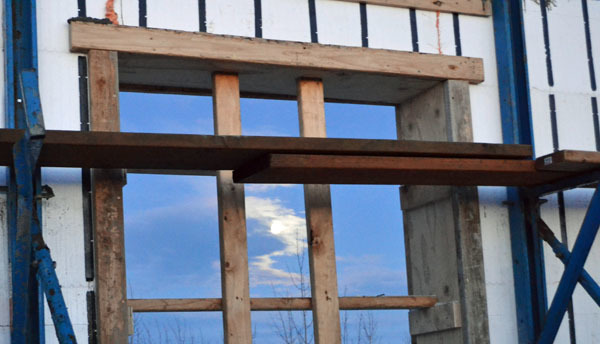
We should be ready to roof.
But instead, we are one step backwards from roofing. We need boards secured on top of the ARXX blocks walls, wedge anchored into the heart of the concrete, called the top plates. From there, we can use truss brackets to secure the trusses to the top plates.
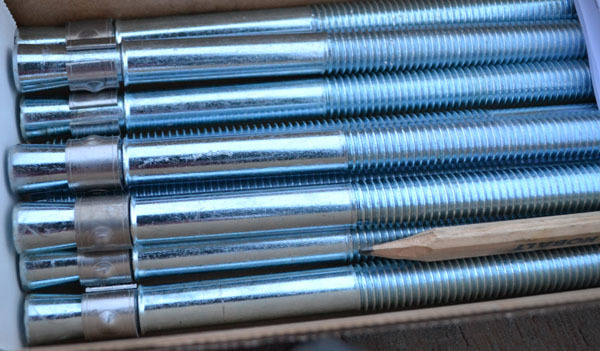
Wedge anchor bolts have a moving ring around the base with a tapered end. When the bolts are pounded in, the ring is pushed up where the bolt is tapered smaller. But when the anchor bolts are pulled upward, the ring is pushed down over the larger tapered end, securing the wedge anchors in the concrete.
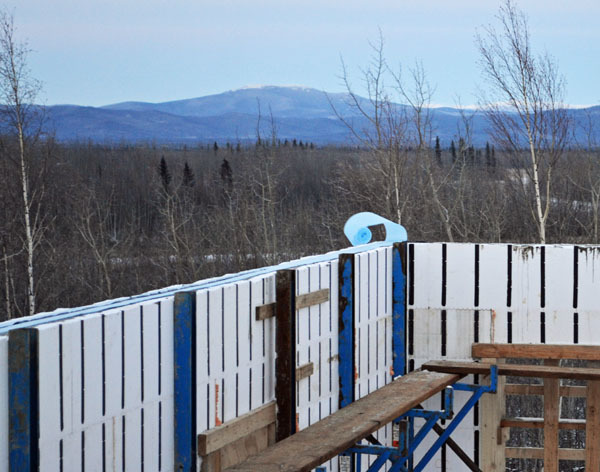
First we roll sill seal out over the tops of the concrete to prevent drafts.
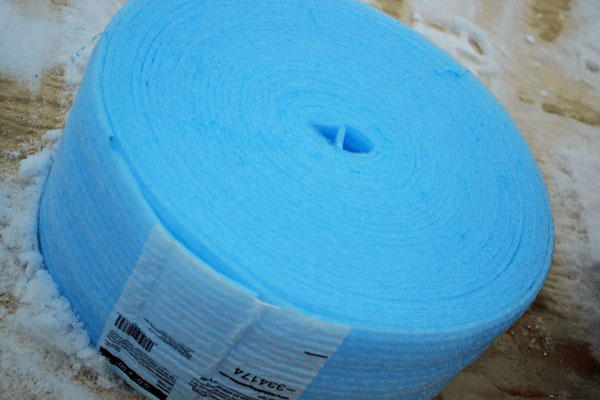
Sill seal comes in rolls sized for 2x6 walls. It's cheap, and but saves you bundles in heating costs. For framed exterior walls, you also roll it out underneath walls to prevent drafts.<div><br></div><div><img src="http://ana-white.com/sites/default/files/anchor bolts top plate 14.jpg " width="470px" alt="" align="none"></div><div><br></div><div>Top plates - which in our case are 2x12 treated boards, go on top of the sill seal. Now we need to anchor the top plates to the concrete.</div>
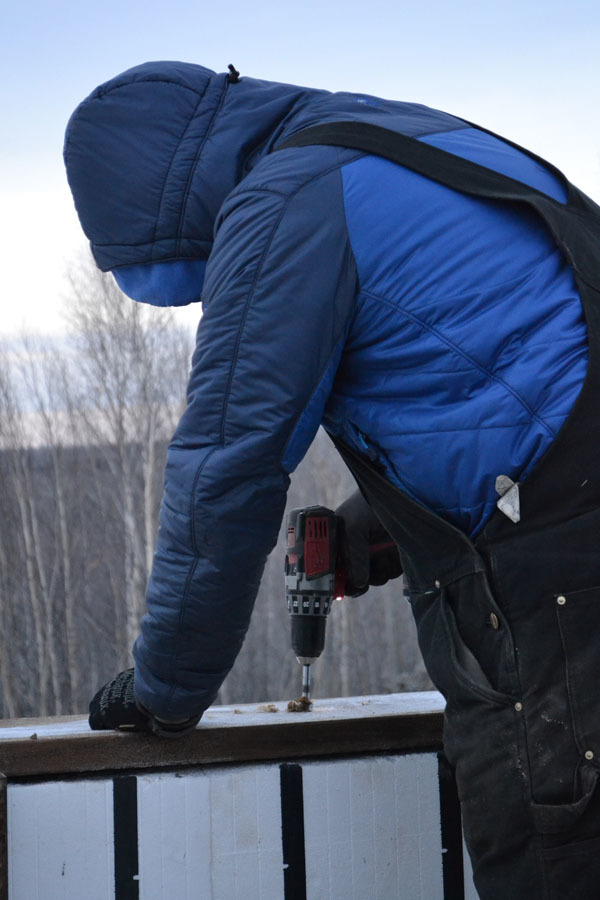
We start by drilling holes sized for the wedge anchor bolts through the 2x12s with a wood drill bit.
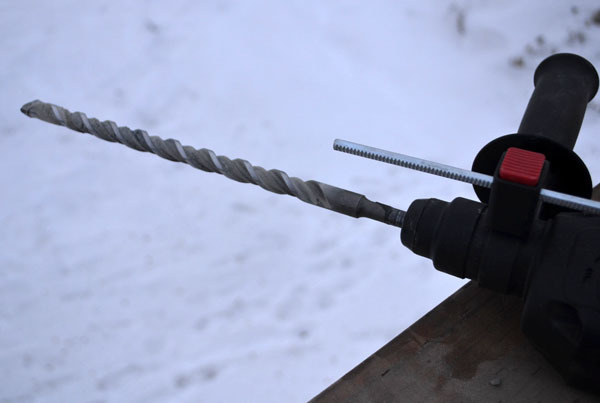
Then we load up the concrete hammer drill with a very long concrete bit.
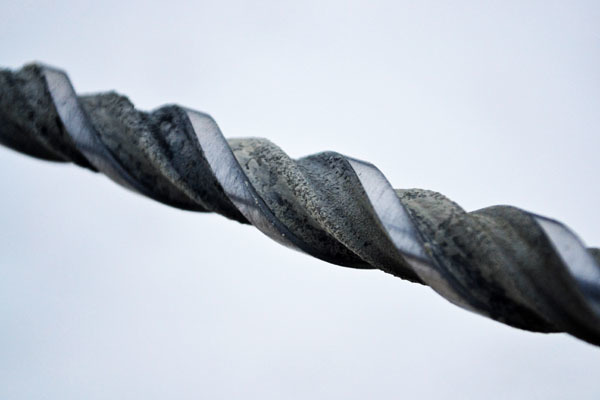
Kind of cool looking!

Then through the predrilled holes in the top plates, we drill into the concrete with the new bit and the concrete hammer drill. I found drilling concrete not so hard, but time consuming. You just have to be patient, keep holding the drill level, let it do it's work, and eventually, the stop will get there!

One down ... a hundred to go. Or more. But who's counting?
<div><br></div><div><img src="http://ana-white.com/sites/default/files/anchor bolts top plate 07.jpg " width="470px" alt="" align="none"></div><div><br></div><div>After each hole is drilled, we carefully vacuum out each hole. Any concrete debris left in the hole is potential for the bolts to loosen over time. Not good when you are talking about a roof being anchored to your Mom's house!</div>
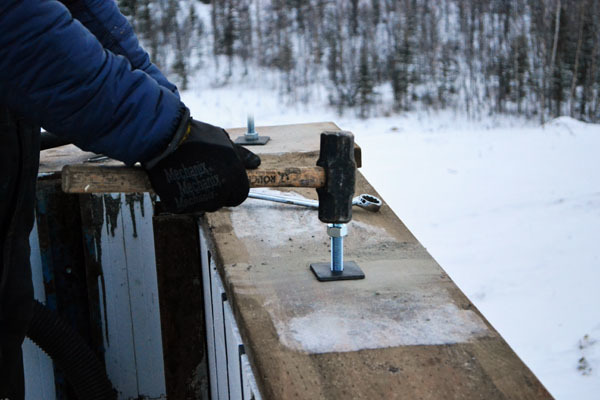
Once the holes are drilled in the concrete and cleaned out, the wedge anchors are pounded in. Remember, once these guys go in, the aren't coming out.
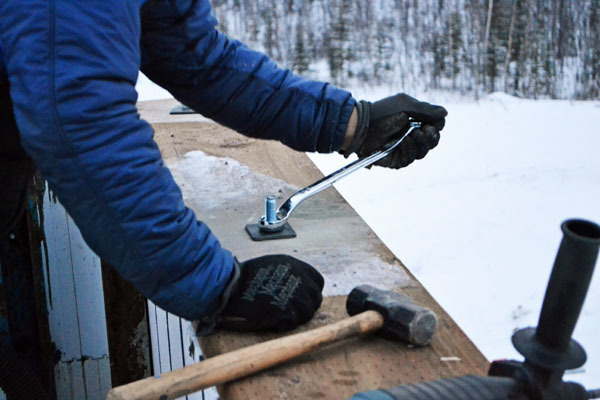
Then the nuts are tightened down ... tight.

And we just keep at it. For days. We ended up creating an assembly line. I daydreamed about chocolate cake, spaghetti, and roasting marshmellows while waiting for the hammer drill to reach it's stop.
And I tried not to think about how much easier this coulda shoulda woulda been if we had just set J anchor bolts into the wet concrete.
And finally, we finished.
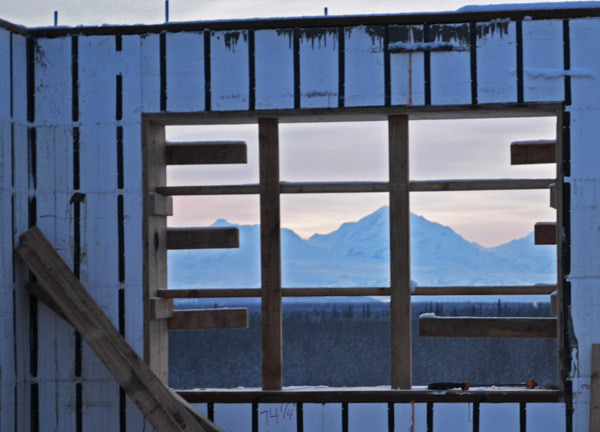
Even if we went about it the hard way, we now have top plates to secure the roof too.
Time to call the crane!

Comments
loniwolfe
Thu, 12/01/2011 - 21:32
I hate those moments! But
DirtSquirt
Thu, 12/01/2011 - 22:25
Yay!
Guest (not verified)
Thu, 12/01/2011 - 22:37
Go roof!
MotherShip (not verified)
Fri, 12/02/2011 - 00:17
Stupid Tax
oana (not verified)
Fri, 12/02/2011 - 00:41
If I ever
LynnieW (not verified)
Fri, 12/02/2011 - 09:04
I've read every post of the
Leah Spires (not verified)
Fri, 12/02/2011 - 09:17
The crane, boss! The
MegShannon (not verified)
Fri, 12/02/2011 - 09:41
So excited for you and if you
In reply to So excited for you and if you by MegShannon (not verified)
mamma_joy
Sat, 12/03/2011 - 00:51
Lol
Anonymous Coward (not verified)
Fri, 12/02/2011 - 11:33
Why you didn't do J-bolts
purejuice
Fri, 12/02/2011 - 12:57
sometimes your perseverance
Guest (not verified)
Fri, 12/02/2011 - 19:20
Congrats on getting that done!
Guest (not verified)
Sat, 12/03/2011 - 06:43
I FEEL FOR YA!
annalea
Sat, 12/03/2011 - 14:08
Excellent Lesson
birdsandsoap
Mon, 12/05/2011 - 13:44
lesson learned...glad to see